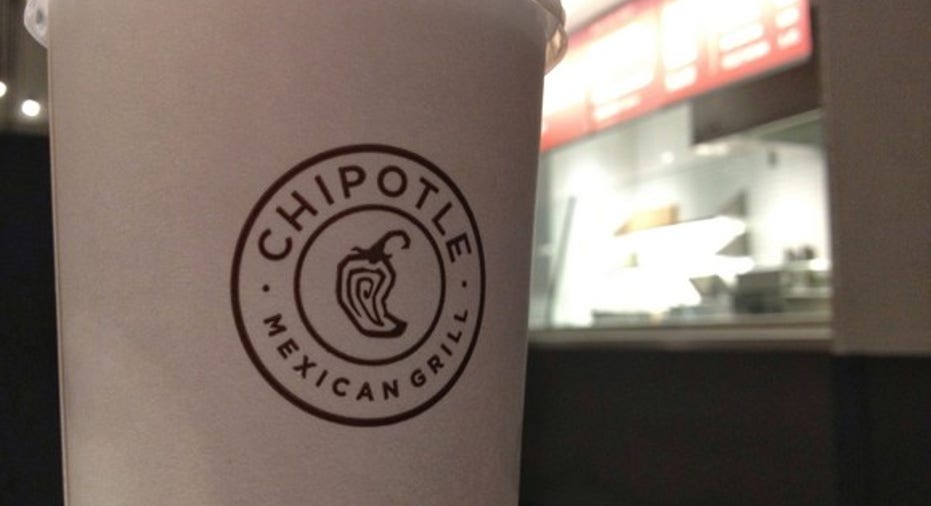Chipotle Is Morphing Into a Traditional Fast-Food Chain

Image Source: Motley Fool.
Throughout its history,Chipotle Mexican Grill, Inc.(NYSE: CMG) has differentiated itself from traditional fast food in almost every way possible.
While chains likeMcDonald's(NYSE: MCD) operate a supply chain of processed, frozen food, Chipotle serves never-frozen food made from simple ingredients. The burrito chain proudly claims its restaurants have no freezers, microwaves, or can-openers.
Chipotle has also bucked the conventional industry wisdom on subjects like limited-time-offers, discounting, new menu items, decor, human resources, drive-thrus, and franchising, and it's clear that those choices have driven much of the company's success for its first 22 years. However, following the series of foodborne illness outbreaks last year, founder Steve Ells and company are operating with a different set of assumptions.
Once a Wall Street darling, the stock has lost more than half of its value since last fall. A year has passed since reports of an E. coli outbreak first shook the company, and same-store sales are still down more than 20%. That's in spite of aggressive efforts in marketing and promotion to bring customers back in the door.
Now management is making a sharp turn from its historical strategy. Will the new moves pay off?
Turning over a new tortilla
On its earnings call last week, Chipotle announced several initiatives to revamp its menu, digital ordering, and advertising, among other changes.
The burrito chain made its new chorizo entree available nationwide, and said the pork-and-chicken based sausage now accounts for 7% of entree orders.Ells also surprised listeners by saying that the company was testing two new desserts, one of which it hopes to soon take national. Earlier this year, Chipotle also began testing a "Beverages with Integrity" program at a Denver location, featuring natural sodas, sangria, a mezcal margarita, and a watermelon agua fresca.There's been no word on the success of that launch or whether it will extend to other stores, however.
On the digital front, Chipotle has redesigned its second make line to make preparing digital and catering orders more efficient, which should help eliminate the lag time between ordering and picking up that now exists at its restaurants. Currently, only 6% of Chipotle's orders come through digitally. Like McDonald's and other chains, Chipotle is also planning to make tablet-based ordering available in its restaurants so customers can skip the line and have their meal made by the back-of-the-house make line instead.
During the call, Chipotle also said that the company is testing television advertising for the first time since 2012, a medium the company has generally resisted in its promotional efforts. Marketing chief Mark Crumpacker said Chipotle may begin doing national TV ads in order to accelerate its customer recovery.
Losing its religion?
Analysts questioned those new tactics on the earnings call, and some see the moves as a sign of capitulation or desperation following the customer exodus. But it's clear that Chipotle must do something in order to bring back customers. Tactics like introducing new menu items, broadening marketing reach, and making the ordering process easier shouldn't take away from any of the things that customers love about Chipotle.
During the earnings call, management was careful to explain that the company would not forget about its fundamentals, and that it would also not lapse into the pattern of a typical fast food restaurant -- introducing a new menu item every three months.
Before the food safety crisis, Chipotle didn't worry about any of these issues because it didn't have to. Performance and profits were strong, and the company had one of the best average unit volumes in the industry. As a result of that success, management overlooked peripheral factors that could have enhanced the brand and its execution as it focused instead on opening new stores and improving throughput. The company has been behind the curve with advances such as mobile ordering, and introducing a loyalty program earlier could have given the company valuable customer data when it needed it most.
There's no monopoly on good ideas, and borrowing from traditional fast-food chains isn't necessarily a bad thing. Something like a television advertising campaign makes sense if it will help bring back customers.
Still, Chipotle's recent struggles are a reminder that nothing about the customer recovery process has or will come easy. Though its trademark foil-wrapped burrito may look like one, there's no silver bullet to be found here.
A secret billion-dollar stock opportunity The world's biggest tech company forgot to show you something, but a few Wall Street analysts and the Fool didn't miss a beat: There's a small company that's powering their brand-new gadgets and the coming revolution in technology. And we think its stock price has nearly unlimited room to run for early in-the-know investors! To be one of them, just click here.
Jeremy Bowman owns shares of Chipotle Mexican Grill. The Motley Fool owns shares of and recommends Chipotle Mexican Grill. Try any of our Foolish newsletter services free for 30 days. We Fools may not all hold the same opinions, but we all believe that considering a diverse range of insights makes us better investors. The Motley Fool has a disclosure policy.